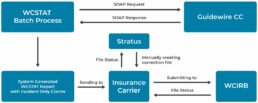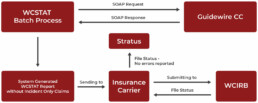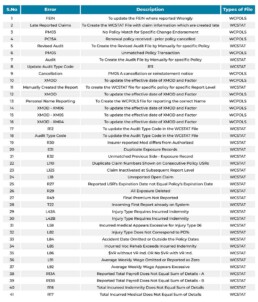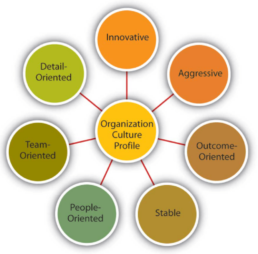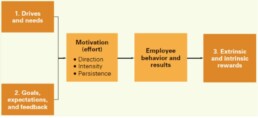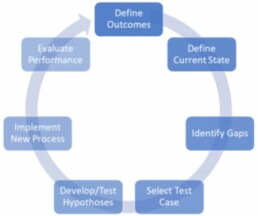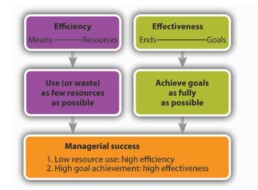Stratus Returns as Gold Sponsor to Promote Ongoing Expansion at Guidewire’s Annual User Conference
Stratus Returns as Gold Sponsor to Promote Ongoing Expansion at Guidewire’s Annual User Conference
Shrewsbury, NJ – October 20, 2022 – Stratus, a Guidewire PartnerConnect Select Consulting partner, is thrilled to support Guidewire’s 18th annual user conference as a Connections 2022 Gold sponsor. “We’re especially thrilled to share all of our exciting areas of expansion and investment with the Guidewire community. Stratus is proud to announce that we have been awarded the Cloud Ready Specialization for the Americas! With the continued adoption of Guidewire Cloud rapidly growing, we’re looking forward to being a part of the journey and ensuring customers migrate smoothly and successfully,” said Britt Bahar, Chief Sales Officer, Stratus.
With all of Guidewire’s latest innovations, Stratus is sending more employees than ever to the conference this year to ensure they’re up to speed on the latest advancements of Guidewire’s products to better service their client base. “Stratus’ greatest asset is our people. We want to expose them to not only the technical advancements of the Guidewire suite of products, but also to ensure they have a well-rounded view of how these innovations impact the greater business and long-term success of our customers. We find the content at each Connections event really fosters continued learning while also encouraging impactful dialogue with both technology and business leaders,” said Alvin Singh, Chief Operating Officer, Stratus.
Rafael Moreira, Senior Vice President of Global Delivery, Stratus, adds on, “With the latest release of Flaine, our team of global Guidewire experts is committed and eager to master the newest advancements especially around Integration Gateway, Cloud APIs and leveraging Guidewire’s SurePath-guided implementation approach to easily integrate Guidewire with third-party applications. Our teams attending Connections look forward to sitting in on various demonstrations of new features to further develop their methodology to ensure continued value is being brought to our clients as they migrate to Cloud.”
Stratus has made significant investments in several strategic areas with the commitment to advancing the value-added solutions that are delivered to their customers. “Providing Guidewire solutions remains at the core of what we do, but what is consistently top of mind is ensuring an in-depth understanding of our customers’ challenges and what they’re looking to accomplish. We’re committed to empowering them on their journey to achieve more,” said Britt Bahar, Chief Sales Officer, Stratus.
Stratus looks forward to another successful year sponsoring Guidewire Connections to further share their capabilities and connect with P&C leaders from around the globe.
For additional information, visit www.stratustech.com
About Stratus Technology Services:
With more than 20 years of insurance experience, Stratus has provided Guidewire specific solutions since 2013 and has a demonstrated track record of partnering with P&C insurers in deploying, customizing, enhancing and maintaining their investment in Guidewire technology and its integrations. Stratus’ commitment and methodology has led it to partner with some of the most well-known P&C insurers, enabling a robust practice servicing more than 45 customers throughout North America.
Powered by their global team of Guidewire subject matter experts, Stratus delivers implementations, upgrades, managed services, and production support for Guidewire’s InsuranceSuite, data and analytics, digital portal and Guidewire Cloud products. Flexible engagement models are supported by Stratus’ 24/7 delivery center in Hyderabad, India which offers scalable and cost-effective solution models.
Stratus’ core engagement team develops customized solutions driven by in-depth customer understanding, industry best-practices and extensive Guidewire product knowledge. Stratus customers receive a unique level of attention, service, and support that is instrumental to the success of each engagement.
Contact: Britt Bahar, Chief Sales Officer, Stratus
bbahar@stratustech.com
848 459 0876
Great Place to Work-Certified™!
We're excited to announce that Stratus has been certified as a Great Place to Work!
This is an important milestone for us, as it shows our commitment to creating a great work environment. We’re focused on making sure our employees feel like their work is meaningful, that they have the tools they need to succeed, and that their voice is heard. We know that when people feel valued and appreciated for what they do, it makes for a better workplace, which means happier employees who stick around longer.
We’re proud of the work that we do and how it helps our clients succeed – and we know that those things are only possible when our employees are happy and productive.
We’re incredibly proud of this achievement, and grateful for all who have helped make it possible.
Interested in joining our team at Stratus? Check out our Careers page to view our current job openings.
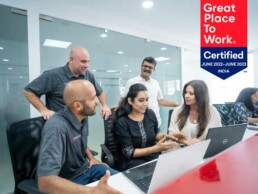
Case Study – How Stratus ensures Business Value and Continuous Improvement with its Clients
Case Study – How Stratus ensures Business Value and Continuous Improvement with its Clients
By Rafael Moreira, Meyvannan Varadharajan & Garima Goel
Problem Statement:
WCSTAT Initial Report Batch process generates the WCSTAT files with Incident only claims which gets reported to the WCIRB system resulting in the following errors from the Bureau for the client causing regulatory incompliance:
- Invalid Injury Code (Injury Type)
- Invalid Vocational Rehabilitation Indicator
Proposed Solution:
After Root Cause Analysis, it was identified to provide a code fix to the web service call preventing to report the Incident Only claims via the WCSTAT files getting submitted to WCIRB. So, WCSTAT Initial Report Batch process will not pick the incident only claims resulting to fix the root cause.
Understanding As-Is Architecture/Flow:
Understanding Proposed Architecture/Flow:
#ValueLeap – Business Value Delivered
- The first set of WCSTAT files submitted to WCIRB are accepted and not causing any regression issues (Invalid Injury code and Invalid Vocational Rehabilitation Indicator).
- Ensuring Insurance Carrier’s regulatory compliance with WCIRB.
- Saving Team’s manual effort of creating correction files to fix the errors caused after the first submission.
- Reducing the Insurance Carrier’s error count in the Quarterly Business Review with the Bureau.
- Delivering Happy Client!
Meet the Authors

Garima Goel
Associate SVP, Program Delivery, Stratus Global Technology Services
Valueleap - Quality Assurance Services at Stratus with BDD
Valueleap – Quality Assurance Services at Stratus with BDD
Stratus is highly determined to bring Business Value driven Delivery. And Being Guidewire Consulting Partners, we are constantly focussed to bring value to our clients and other Insurance Carriers using Guidewire as their core system. One of such initiatives is building our in-house competency and constructing a highly trained and certified team with BDD knowledge and experience. This Value oriented Team can be leveraged across Guidewire projects supporting Core Systems (Policy, Claims, Billing, Digital, Rating, Forms Generation etc.) with various lines of Insurance businesses including Personal and Commercial lines, BOP, Renters, WC, LRP, GL to redefine and revamp the test automation frameworks utilizing the Behaviour- driven development approach including Application, API and UI Testing. This Team aims to work and deliver a powerful, reusable and robust test automation strategy providing speed, optimization and quality leading to ROI and Customer Satisfaction.
QA Automation
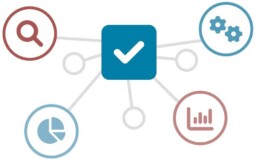
What is BDD?
BDD is Behaviour- driven development which is an Agile Software Development methodology focussing on the end-user’s perspective. BDD encourages collaboration among three Amigos of the Agile Team – Business Analysts, Developers and Quality Analysts to identify required system behaviors using a common language (Given-When-Then format) to create concrete examples of the system. BDD helps to build a shared understanding of the system among the team members brining efficiency gains and robust testing protocol by using acceptance tests.
With BDD, system behaviors are identified first and then test automated specifications are written by the team.
Behavior-Driven Development Testing Cycle
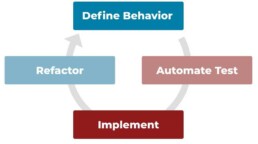
BDD centralizes attention to the system behaviors that need to be implemented along with those which will deliver most business value using Cucumber as the software tool and Gherkin as our scripting language enabling test automation. The GW testing Framework uses the Gherkin scenarios which are actually live requirements in a feature file for automated testing.
BDD methodology helps ensure that quality and testing do not come last in the project implementation rather it helps quality shift left and being built into every step of the development process and establishes a clear understanding of the system behaviors since the beginning of the project within the Agile Team.
Behaviour- driven development helps:
- To improve understanding of the requirements and lessens rework of requirements by using a common language with system behavior as the focal point and not system solution.
- The core attention to business needs reduces the rework and documenting behaviors provide longer shelf life than the implementation itself.
- Team collaboration increases with BDD which is a crucial key to successful BDD implementation along with enhanced developer confidence.
- The whole structure in-turn leads to higher Productivity Gains, Cost Effectiveness and drives Business Benefits with emphasis on behaviors with Business Value and prioritizing implementation of most valuable features.
The Team at Stratus is well-versed and experienced to use the Guidewire Testing (GT) Framework which simplifies testing and enabling BDD. We understand that it is mandatory for the Cloud Customers to follow Cloud Standards and the GW Testing framework be used and our Team has all the in-house capabilities to offer these advanced Quality Analysis services for Guidewire Cloud Platform with our enhanced competency and proficiency with GT-API and GT-UI which are functional automation tools available only on Guidewire Cloud Releases.
Functional Automation
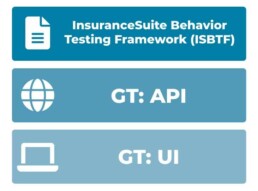
The utilization of Guidewire Testing Framework ensures:
- Early defect detection bringing value to the overall product implementation and saving time later in the release
- Swift feedback on changes
- Better collaboration between Business and Technical users to enable fast implementations, releases and updates
- Common Testing Infrastructure with industry standard test automation tools – built on widely used open source and frameworks and tools
- Enables E2E testing of Guidewire APIs and for UI testing of GW Applications
We have currently automated approx. 180+ test scenarios with BDD framework across PolicyCenter, ClaimCenter and BillingCenter covering Account creation, Quote creation, Policy Creation, Policy Change transactions, Cancellations, Renewals (Manual and Time Travel), Out of Sequence transactions, Rescind & Reinstatements, Rewrite New Term, Rewrite Mid Term and Rewrite Full Term, Forms and Document validations in PolicyCenter. Policy Search & retrieval, Existing claim details updating, FNOL – New Claim creation and Documents generation validation in ClaimCenter. Policy Search & retrieval, Invoice validations, Policy related details validations, Disbursements, Part Payments and Workflows/Batch job runs in BillingCenter. This also includes Rest API and Guidewire internal APIs testing. The team also has developed BDD framework to test and validate XML files and Flat Files with the Guidewire Applications.
Reference:
Education.Guidewire.com- Behavior-Driven Development at Guidewire
Education.Guidewire.com – Guidewire Testing Framework Overview
Case Study – How we continue to drive Business Value and Thought Leadership with our Clients
Case Study – How we continue to drive Business Value and Thought Leadership with our Clients
By Rafael Moreira, Srinivas Nellutla & Garima Goel
Problem Statement: Portal Middleware is sending emails for Business scenarios as listed below:
- Profile change
- Mailing address change
- Service request
- Document upload for policy
- FNOL confirmation
- Document upload for claim
- Any other specific scenario
Proposed Solution: Move Middleware logic to Guidewire
- To eliminate the maintenance and monitoring efforts of Middleware
- To reduce multiple service calls to perform single functions like for profile change, mailing address change and FNOL confirmation etc.
Understanding Architecture/Flow:
Design Review - As Is vs. Proposed
Context Diagram:
#ValueLeap – Business Value Delivered
- One extra point of failure removed from Portal emails
- Saving effort being spent on maintaining and monitoring the middleware
- Improved process efficiency by removing the multiple service calls
- Efficient tracking of portal emails made possible due to Guidewire messaging queue implementation
Meet the Authors

Garima Goel
Associate SVP, Program Delivery, Stratus Global Technology Services
Valueleap - Regulatory Compliance Services at Stratus
Valueleap - Regulatory Compliance Services at Stratus
At Stratus we are highly determined to bring Business Value driven Delivery. And Being Guidewire Consulting Partners, we are constantly focussed to bring value to our clients and other Insurance Carriers using Guidewire as their core system. Stratus is building its in-house competency and constructing a highly trained and qualified team with sound knowledge and experience in driving regulatory compliance for WCIRB data reporting in California. This Value oriented Team can be leveraged across Guidewire projects with WC line of Insurance business. The STS WCIRB Team aims to work with a powerful, reusable and robust strategy to provide responses and correction files to the Bureau for both WCPOLS and WCSTATS file types:

- Detailed and in-depth analysis of the Client system, batches and the errors reported
- On-Time/ Faster Turn-around time aligning with regulations
- Avoid Regulatory Fines
- Scheduled Workshops with Business to explain the course of correction
- Regular attendees to the Data Quality Dashboard meetings hosted by WCIRB
- Providing speed, optimization and quality leading to ROI and Customer Satisfaction
- Ensure the Carrier remains in green for Bureau data reporting
- Internal stringent process of Peer Review of the correction files by the SMEs
- Causing No Regression or further errors
- Bring automation of existing processes after code analysis to avoid recurrence of errors
- Continuous Backlog Refinement
- Manual analysis all the monthly WCSTAT and WCPOLS files prior to submission to WCIRB – bringing the count of critical errors to Zero
- Completely aligned team with changing WCIRB guidelines and regulations
- Document knowledge and exception cases in a Runbook/ Playbook
What is WCIRB?
The Workers’ Compensation Insurance Rating Bureau of California (WCIRB) is California’s trusted, objective provider of actuarially based information and research, advisory pure premium rates, and educational services integral to a healthy workers’ compensation system.
Our team has strong and substantial experience resolving and handling the following regulatory errors with WCIRB:
How we work
-
Comprehensive analysis of the error reported by WCIRB
-
Root cause Analysis of the issue reported
-
Preparation of correction files to the Bureau
-
Peer Review of the file prepared prior to the submission to WCIRB
-
Submission of the reviewed and approved correction file to the Bureau
-
Closure of the error
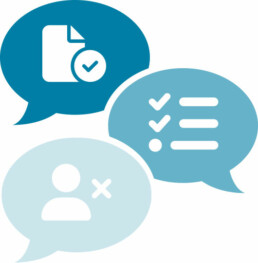
A review article on using Business Value Oriented Delivery at Status Global as a flexible holistic approach to Team Growth and Project Success
A review article on using Business Value Oriented Delivery at Status Global as a flexible holistic approach to Team Growth and Project Success
By Rafael Moreira & Garima Goel
Abstract
Being a Global Technology Consulting firm, we are always focused in creating impactful results and empowering our clients to achieve more. With Technology, Solution and People as our three pillars of commitment and success, we strongly emphasize on BVOD.
The Business Value Oriented Delivery is a novel extension for Organization Management with focus on optimization and enhancing the Business Value of our Products and Services. We rely on adding value, attention and centralizing our efforts to the Organization Culture, team dynamics, client interactions, relationship between client and us, human resources and relations, work processes, employee interactions, attitude, skill, and maturity levels, reducing waste, knowledge harvesting, asset management, re-usability of our products, innovation, modernization, creativity and satisfaction of our end users and clients.
We as an Organization, believe in fostering a culture where our Team Members are proactive and aligned with the short-term and long-term goals of the company bringing higher levels of contribution, efficiency, productivity gains and shared responsibility of client deliverables. A culture of mutually evolving, growing and respectful team improving its personal and professional qualities, eliminating impediments on its own, optimizing processes, managing work, and removing waste in terms of time, effort, resources, communication wherever possible.
Every aspect of management at Stratus involving people, project, program, priorities, conflicts, resources, product, services, vendor has its prime attention to Business Value being driven and achieved.
Program Management at Stratus Global:
At Stratus, one of the core and crucial activities performed is to analyze project dependencies because the whole program and all projects are interconnected based on dependencies. We believe that knowing the dependencies between projects really helps various teams get the big picture and deliver business value with excellence. Planning and communication become easier, and it will make logical sense at an early stage in project development, so the Teams know where to focus their efforts. It’s also critical that project managers have an idea of where to look for the optimization of processes and increase the business value of projects. Our three sound fundamentals of work and adherence in this direction include – Knowledge Management, Asset Management and Cross- Skill Management of our Team Members.
We make sure that every slice of information and knowledge within Stratus is harvested and made accessible to our complete workforce for reference and re-utilization across projects using Confluence and SharePoint as our tools. Artifacts can include excel documents, word sheets, presentations, team recordings, tools, utilities etc. which are then preserved as Assets within our repository. This stimulates a culture of knowledge sharing between the team members, strongly encourages cross- communication and promotes productivity gains by applying existing references for a new Business Client. Team members do not hesitate to push technical suggestions and recommendations to Business Users which have been already tested and validated and are absolutely expected to work when implemented, in return reducing waste and channelizing efforts in other needed project areas and aspects.
We currently have approximately 50+ internally cultivated tools and assets which have been extensively utilized across projects reducing waste and delivering value to our client base.
We trust that cross-skilling or cross-training allows team members to pick up different mindsets, act as a better support system for other team members within the project or across projects and appreciate their challenges. It assists team members to help balance the workload, appreciate, and respect the contributions of the other team members and drive collaboration and decision-making choices that incorporate the various project perspectives.
Stratus, as an organization fosters that healthy and cross-functional teams lead more business value and avoid sprint fatigue maintaining the team velocity, cohesiveness, and motivation. >70% of our workforce across the shores is cross-skilled and trained which helps us drive dynamic client goals.
Prioritizing projects and milestones for realization by business value and dependencies by Stratus Global:
Based on the dependencies between projects and their business value, prioritization is the needed step to be performed carefully. Prioritization ensures clarity on the projects’ importance of implementation and requires planning, investment, and general focus. Along with the delivery of milestones which includes design phase-completion, test completion, product demonstration to consumers.
How Stratus Global Establishes people-and-business-oriented culture:
With our Business Value-Oriented Delivery Model, we are focused to develop a people-and-business-oriented culture in which everyone in the organization is perceived and treated as a human being and a business partner at the same time. The culture supports formal and friendly relations equally because this helps people to relate to each other openly and positively. At the same time, all responsibilities are taken seriously.
Our People-and-business-oriented culture includes:
- Treating everyone as a person and a business partner at the same time.
- Respecting others’ emotions, feelings, and peculiarities.
- Respecting others’ time and responsibilities.
- Accepting and following organizational strategies and missions.
- Business etiquette.
- Positive and supportive attitude.
The Company strongly aligns that this mutually evolving culture needs to be spread across all offices, departments, teams, individuals, and even to external interested parties that may need to understand it and align their interactions with the requirements. A culture of this kind that involves personal and business relations may not be easy to establish and understand and may need time and effort.
Aligning Employees with Stratus’ strategies at Stratus Global:
We are an organization of great people with diverse knowledge, expertise, skills, and personalities and the understanding of our organizational culture may depend on many factors like experience, skills, culture, age, or cognitive perceptions. Different employees may have different perceptions about us including priorities and processes. These differences may become a reason for conflicts, low motivation, productivity decline, information loss, and may cause delays in communication. Aligning the workforce, employees and team members with Stratus’ strategies may be considered as initial risk management but we know that Awareness, agreement, and commitment from the entire organization, offices, departments, teams, or individuals is essential for achieving the organizational goals and motivating our workforce achieve their respective goals. We perceive this as a symbiotic and mutually growing relationship and association where we as an organization ensure and support our employees to accomplish their aspirations while aligning with our Vision to assure optimal solutions are found, presented, and agreed upon.
Participation in decisions at Stratus Global:
Stratus participates in fast and reliable decisions making across different stages of project delivery and product development. Various individuals, teams, and external organizations may need answers to questions about every aspect of the project. A frequency of response and solutions may eliminate waste and speed up the work of entire team and organization. For efficient and swift decision making, we extensively rely on our well-prepared, trained and professionally knowledgeable team members and trust their judgement.
How Stratus Global performs Motivation Management:
Motivation is considered as a total result of someone’s perception, self-confidence, beliefs, emotions. Stratus participates in improving the perception and self-confidence of individuals and employees inside the organization, discusses beliefs, and supports individuals in managing their emotions. We understand that Motivation is a factor, which enhances work, speed, communication, and participation in activities. We may still need to train people or organize their activities, so the desired level of commitment can be achieved with time. All the project deliverables and Organizational goals are carried out by our employees and hence its extremely vital for us to spread a noticeable people-oriented culture, ensure Organizational stability, meaningful work with a general sense of stability and sense of purpose.
We take time and efforts to define clear responsibilities and realistic objectives for our workforce helping them attain professional and personal development, acknowledgment, and recognition. We gracefully conduct various motivational initiatives to reward our employees and announce their achievements. Every Leader of the company is expected to comply with positive management style and transparency. Stratus firmly accepts that its our foremost responsibility to provide a healthy and modern working environment to our taskforce to keep them motivated and regularly aligned with the defined objectives and goals. We have highly well-defined and clearly laid bonus system and social packages for our employees to applaud them for their performance and deliverables where we do not let them wait for a Year to finish to perform their performance evaluation but pro-actively congratulate them as and when they walk an extra mile for us.
How Stratus Global Conducts Personal Development Management:
We consider that Personal development is essential for both people and organization, and it’s our constant endeavor to create plans for personal development of our employees that contain clear objectives, definitions, and instructions for our team members. This exercise is significant to increase self-confidence and commitment, develop new skills, enhance motivation, communication and productivity with Improved behavior, work-life balance and A better understanding of Stratus processes and management, objectives, and mission to apply knowledge and expertise across the organization, develop mature reactions and adaptation to changes and support initiatives of others.
Product Optimization Practices at Stratus Global:
Optimization practices are needed in every developing product and even in a complete and ready-to-use product. The product optimization practices at Stratus are:
Pre-release optimization practices
During the development process, the entire product or its parts may be tested, validated, and agreed to be produced based on the users’ and different stakeholders’ feedback. Depending on our general practices and goals, repetitive analysis of the end-results may be applied. Stratus believes that the human factors, cognitive biases, and other typical and natural occurrences may often come up during sessions of validations, testing, and providing feedback. Careful users’ observations can be a tool to differentiate between the users’ feedback and their real actions to gather more realistic data. Misalignments between users’ feedback and their actual behavior should be recorded and may be used for future optimization. Before an optimization action takes place, the Stratus Team discusses the misalignments with the users who provided the feedback to find common points with their feedback and the observations to avoid waste and product degradations.
Post-release optimization practices
Once a product is in a real-world environment, expeditious statistics and feedback gathering are very important, so everything planned during the development stages can be matched against a real-world situation where significant access to real users is available.
If pre-release optimization actions take place and the product or some parts of it are improved and defined as satisfying, the real-world environment provides fast, and extensive knowledge about the way users use the product. Misalignments between the prognosis and the real usage may get identified. Stratus plans and executes post-release optimizations if the noted misalignments get evaluated as harmful for the product, the users, the organization, the profits, or for other third parties. Typical post-release optimizations may be implemented based on the following major reasons:
- User tasks and needs defined and validated before the product release don’t provide a satisfying outcome.
- Users are experiencing difficulties using the product.
- Harmful users’ actions.
- The product is consuming too many resources.
Waste Management at Stratus Global:
Any activity that does not return business value, valid outcome, desired results, or requires too many resources can be considered as waste for products, projects, organizations, and other external parties. Major causes of waste may include:
- Too much planning
- Incorrect or not validated planning
- Non-productive research
- Wrong sourcing and recruiting
- Inadequate analysis and processing of data or information
- Poor communication
- Wrong production
- Poor production
- Poor testing
- Supply or delivery delays
- Overwork or perfectionism
- Poor or excessive documentation
- Rejection of completed work that could be approved
Stratus considers any possible waste, monitor its occurrence, and take the necessary elimination measures quickly. Waste remains to be a regular topic in our risk management. Each identified waste may need a specified reduction approach or multiple approaches. Stratus collaborates and agrees on ways to deal with different waste situations. All possible waste is added to the project risk list and assigned to team leads/members, and subject to monitoring, discussion, and prevention practices.
We direct our efforts to entirely remove a wasteful process or activity if it does not provide any value and continue Educating our teams, individuals, or other parties when needed for reducing waste.
Stratus Global Execution Strategy:
Executing includes all activities between planning and closing the project. Executing is not a specific activity. It is a mix and groups of activities that are needed to complete the project and add business value. During the entire executing phase, Stratus and its teams focuses on activities, paying specific attention to:
- Waste management
- Decisions making
- Defects analysis
- Observation and optimization
- Support
These activities are the most essential for providing speed, quality, and covering the scope of the project.
Time Management at Stratus Global:
At Stratus, Time Management is a continuous process. Our Teams consider the following multiple factors while working on estimates of required completion time of a given effort (task, item or initiative that needs work):
- Previous time consumption of a similar activity
- Current knowledge of scope and requirements
- Relational effort points
- Teams’ velocity
Adequate and optimum time planning, and management can help reduce waste and ensure successful project delivery meeting timelines and hence, brining value needed to the client.
BVOD At Stratus Global – THE CONCLUSION
BVOD is a knowledge creating process with a high level of information being shared during the whole cycle and work progress during product development. It has a clear positive effect on synchronization, communication, productivity, and transparency at both intra and inter department levels within the Teams and at the Organization level.
We have observed that our managers and leaders focus on hiring flexible people with good social skills. Stratus environment makes inexperienced developers more attractive offering more flexibility and quality of work. It helps communicates visions and goals more evidently instead of just listing the project requirements.
The Co-operation gets better because all the teams can count on planned delivery dates and hence act on their own. The implementation of Business Value driven delivery in our organization has led to higher visibility, highly visible individual productivity, less time wasted because of blockers and increased team socialization. BVOD uses an empirical approach to project development where interaction with the work environment and the teams is not only allowed but encouraged to a greater extent. With the changing scope, technology, and functionality, BVOD at Stratus ensures continuous information sharing and feedback which keeps the performance and the trust high. Its application in our organization has generated a strong culture with well-defined roles, responsibilities, and relationships.
References
- H. Takeuchi and I. Nonaka, “The New New Product Development Game,” Harvard Business Review, 1986.
- J. Snowden and M. E. Boone, “Leader’s Framework for Decision Making,” Harvard Business Review, 1 Nov 2007.
- Fowler and J. Highsmith, “The Agile Manifesto,” Dr. Dobbs, July 13 2001.
- VersionOne, “3rd Annual Survey: 2008 – The State of Agile Development,” Version One2008.
- Schwaber and M. Beedle, Agile software development with scrum: Prentice Hall, 2002.
- Benefield, “Rolling Out Agile at a Large Enterprise,” in HICSS’41, Hawaii International Conference on Software Systems, Big Island, Hawaii, 2008.
- Jakobsen and J. Sutherland, “Scrum and CMMI – Going from Good to Great: are you ready -ready to be done-done?,” in Agile 2009, Chicago, 2009.
- O. Coplien and N. Harrison, Organizational patterns of agile software development. Upper Saddle River, NJ: Pearson Prentice Hall, 2005.
- Schwaber and J. Sutherland, “The Scrum Guide: The Definitive Guide to Scrum, The Rules of the Game,” in Software in 30 Days, ed: John Wiley & Sons, 2011.
- Sutherland and K. Schwaber, The Scrum Papers: Nuts, Bolts, and Origins of an Agile Method. Boston: Scrum, Inc., 2007.
- Sutherland, A. Viktorov, J. Blount, and N. Puntikov, “Distributed Scrum: Agile Project Management with Outsourced Development Teams,” presented at the HICSS’40, Hawaii International Conference on Software Systems, Big Island, Hawaii, 2007.
- Sutherland, S. Downey, and B. Granvik, “Shock Therapy: A Bootstrap for Hyper-Productive Scrum,” in Agile Conference, 2009. AGILE ’09., 2009, pp. 6973.
- R. Jakobsen and J. Sutherland, “Scrum and CMMI Going from Good to Great,” in Agile Conference, 2009. AGILE ’09., 2009, pp. 333-337.
- R. Hackman, Leading Teams: Setting the Stage for Great Performances. Cambridge: Harvard Business Review Press, 2002.
- org
- Sullivan and H. Thompson, “Gray Matter: Brain, Interrupted,” in New York Times, ed. New York City: New York Times Company, 2013.
- Salitsky, B., Scrum Burndown Chart, Release 3.20. 2005, PatientKeeper, Inc.: Brighton, MA.
- Sutherland, J., Agile Development: Lessons Learned from the First Scrum. Cutter Agile Project Management Advisory Service: Executive Update, 2004. 5(20): p. 14.
- Wright, Congregational Polity: A Historical Survey of Unitarian and Universalist Practice. Boston: Skinner House Books, 1997.
- Denning, “Impediments are shared goals-problems become circular firing squads,” A. Sutherland, Ed. Somerville, MA, 2009.
- Page, The Difference: How the Power of Diversity Creates Better Groups, Firms, Schools, and Societies: Princeton University Press, 2007.
- Nayan Jyoti Kar, “Adopting Agile Methodologies of Software Development”, SETLabs Briefing, Infosys Technologies, vol. 4 no. 1, pp. 1-9, July-Sep. 2006.
- Jiangping Wan, Weiping Luo, Xiaoyao Wan, “Case Study on Critical Success Factors of Agile Software Process Improvement”, 628-631, IEEE 2011.
- Feature Driven Development and Agile Modelling, http://www.agilemodeling.com/essays/fdd.htm.
- Vladan Devedzic and Sasa R. Milenkovic, “Teaching Agile Software Development: A Case Study”, IEEE transactions on education, vol. 54, no. 2, pp. 273-278, May 2011.
- Peter Maher, “Weaving Agile Software Development Techniques into a Traditional Computer Science Curriculum”, of 6th IEEE International Conference on Information Technology: New Generation, pp. 1687-1688, 2009.
- Xiaofeng Wang, “The Combination of Agile and Lean in Software Development: An Experience Report Analysis”, IEEE Agile Conference, pp. 1-9, 2011.
Meet the Authors




